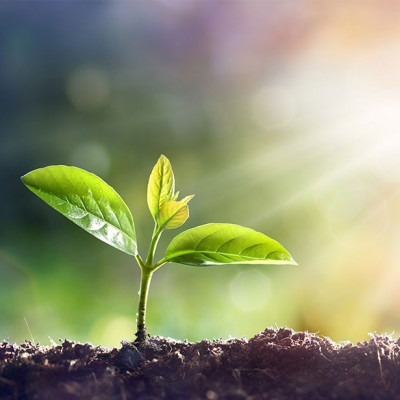
2022-11-17
Visited : 1528
Researchers at the University of São Paulo’s Center for Nuclear Energy in Agriculture (CENA-USP) in Brazil, collaborating with colleagues in Canada, France, Italy and Spain, reviewed 1,154 original scientific articles published between 2009 and 2022 on the effects of nanomaterials in 1,374 plants belonging to 253 species. The metadata review assembled and organized quantitative information on the experimental parameters used in the scientific literature of the past decade.
With the metadata (data generated from the data published in the literature), the authors systematized the knowledge produced collectively to date on the most used nanomaterials, the type of environment to which plants are exposed, the plant organs most exposed to treatments, and the duration of studies. In addition, they calculated the percentages of nanomaterial-based treatments that had positive effects, negative effects and both, as well as those that had no effect on plants.
The study was supported by FAPESP via seven projects (20/07721-9, 20/11178-9, 20/11546-8, 17/16375-4, 15/05942-0, 16/50014-6 and 17/21004-5).
The findings are reported in an article published in Environmental Science: Nano, a journal of the Royal Society of Chemistry, and signed by 15 researchers affiliated with six different institutions.
“If we want to leverage the properties of nanomaterials to increase crop yields, or find out how they could threaten the environment, we need to plan our research and execute it effectively. The results obtained in any given experiment depend on how it’s conducted,” Hudson Wallace Pereira de Carvalho, last author of the article. Carvalho has a PhD in chemistry from the University of São Paulo (USP) and the University of Paris XI (now Paris-Saclay).
The authors concluded, for example, that 71% of studies did not use positive controls, whereas any assessment of the effects of a nanoparticle should include micrometric particles or soluble compounds with an analogous chemical composition. “This strategy could distinguish correctly between the effects of nanometric properties and those of ions or microparticles,” Carvalho said.
Another point examined was the amount of nanomaterial to which plants were exposed. “We found that for a given chemical element, levels were generally higher than those to which plants are naturally exposed in the environment, or those to which they’re exposed in agricultural production,” he said. This led to a question: Are the effects, especially the negative ones, due to high levels of nanomaterials or to the properties of the nanometric world?
The authors also found that studies were shorter than the lifecycles of the crops concerned. The median duration of the experiments was 49 days for soil-grown plants, compared with 90-120 days for annual crop cycles. A minority of studies assessed the effects of nanomaterial-based treatment on yields and production quality.
Moreover, few experiments (6%) were conducted under field conditions, which require considerable effort. In a field trial, variables such as weather, pathogens and soil differ from one location to another, so more than one site and even more than one crop cycle should be covered.
On the other hand, care should be taken to design field experiments before nanoparticles are applied to crops, in order to avoid spreading potentially toxic substances in the environment.
Impact on microorganisms
The authors also found that only 19% of studies involving application of nanoparticles to the soil measured their impact on microorganisms. “Microorganisms are essential to maintenance of soil fertility,” Carvalho noted. “It’s difficult to reach a conclusion as to why the experiments were conducted in this manner. Nevertheless, our meta-analysis suggests opportunities and directions that could be worth following up on. Of course, this is a relatively recent multidisciplinary knowledge area, and a great deal remains to be investigated.”
For example, some properties are known to be more pronounced in particles smaller than 29 nanometers. The study showed that about half of the treatments used particle sizes above this threshold. “This may mean we’re still trying to understand how particle size affects plants,” Carvalho said.
All told, the findings point to “the intricate relationship between our ability to infer conclusions and the experimental design employed”, the authors conclude, adding that “this comprehensive and up-to-date overview of the effects of nanomaterials on plant systems raises the question of whether nanomaterials will lead to incremental yield gains by replacing current inputs with nanotechnology-based ones, such as the controlled release of fertilizers and pesticides, or will disrupt agriculture by attacking problems so far not practically addressed, such as plant stress and defense mechanisms, or modulating metabolism and photosystems”.
Read the original article on FAPESP.